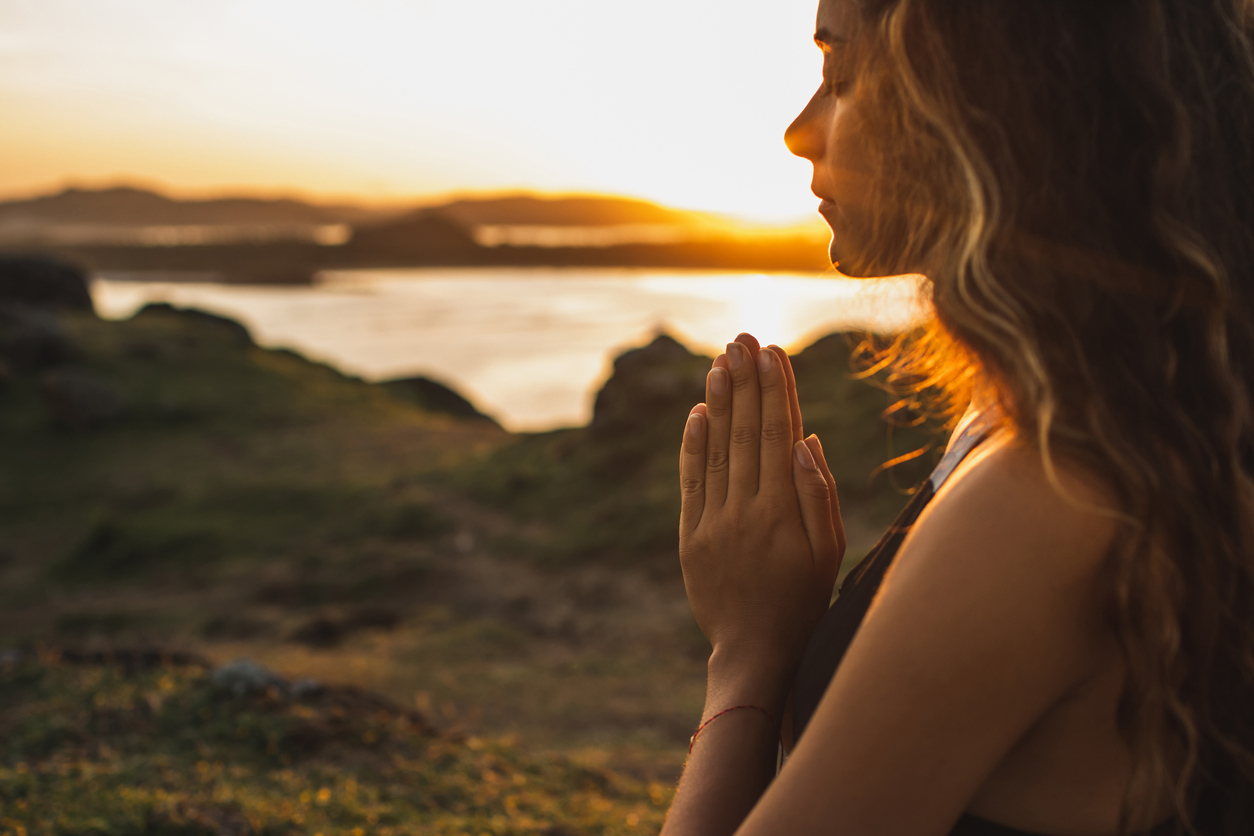Jayne Nicholls reveals why we do what we do in the repeat, repeat, repeat of a sun salutation.
You know that ‘they’ say yoga is a journey?
At first, I thought this to be one of the many clichés that litter the narrative associated with yoga, and then, as has been proven to be the case over and over again since I started doing yoga in 2000, I witnessed its truth with my own eyes and feel it with every inch of my body.
Where did the sun salutation originate?
There are so many stories and theories relating to the source of the sun salutation, and what I love about these tales in yoga is that something will resonate with each one of us and settle in our minds as a fitting tribute to the practice that we repeat each day. In the yoga sutras, Patanjali refers to our most transcendent teacher not as a person but as a higher state of consciousness that allows us to leave all constraint and be boundless (ishvara). The best metaphor for this is the sun (surya), the very thing that illuminates and emanates warmth, so it makes good sense that we salute it (namaskar) in this process.
It was not until the 20th century in contemporary yoga via Krishnamacharya and his descendants that the sun salutation (surya namaskar) became a sequence of around 12 postures that starts and finishes in a standing position and links via movement, breath, focus and intention. On reflection, my previous sentence seems to underplay this flow in that the 12 postures start and finish with a mountain and, through each journey, we encounter the highest and lowest points that we can reach, moving fluidly with stability and ease, forwards and backwards with a clear determined vision. The salutation becomes the perfect time in our day to consider our conduct, decision making, ask what we have given, taken, was it worth it, who was affected and, of course, this list is endless.
I always try to teach my students to allow themselves to leave the role of beginner as quickly as possible. Yoga is abundant both physically and mentally, therefore unless we willingly advance and have the courage to take information and apply it to our own self efficacy, we will only experience the physical practice and deny ourselves the fullest experience. My hope is that, in delving into its history, we learn that to truly experience not only the sun salutation but even the simplest of yoga postures we need an inquisitive and open mind. Unless we allow our brains to accept the art of storytelling, we will miss many of the lessons that yoga teaches us.
Performing sun salutations
What makes the sun salutation simple to perform and easy to grasp is the fact that it is practised in the sagittal or functional plane of movement. It can be anything from a simple series of calisthenics to a full gymnastic display.
I wonder if you have ever considered that, from a fitness perspective, it is the exact same pathway as a burpee?! So right now, let’s think of it as a mindful burpee as we break down why it features in pretty much every yoga class as either a warm-up or an integral part of class construction and, for many modern yogis, forms a daily ritual that simply cannot be missed.
Physical and mental preparation
Every modality has its favourite or signature moves. The sun salutation creates the perfect scene setter for a yoga class, as the movements are all big enough to allow a synchronised breath, the focus is either forwards or backwards and, because it is pretty functional, it is easy to remember allowing the mind and body to unite as the salutation is repeated.
Hatha yoga encourages the process of one-pointedness of mind (ekagratha) and, when you repeat the sun salutation over and over, it becomes almost robotic, encouraging meditation in movement. Partnering with the physical is the ujjayi breath, which is a mid or thoracic breath that resonates in the throat, making a sound that is romantically like the sea, colloquially like a light snore or fantastically like Darth Vader – take your pick! When you can hear your breath, it is much easier to focus on it, which makes the noisy breath a kind of music that keeps each movement on track in terms of start, finish and cadence.
Internal heat
Generally, the sun salutation is repeated up to 15 times as a warm-up in order to generate internal heat. I doubt there is a muscle that remains unused throughout the process and, by repeating the sequence many times, we have the option of building its intensity by adding jumps forward and back or suspension via the triceps dip.
Strength and flexibility
When performed as a basic option, the sun salutation encourages optimum range of motion and flexibility; we can linger in the full fold and downward facing dog postures, encouraging movement in the tighter areas of the hamstring and lower back. As an advanced practice, it requires great strength in order to lift high into jumps and keep the body hovering off the floor throughout the flow. Combine this with the fact that it is repeated many times for stamina and your sun salutation contains all of the prerequisites for a good yoga practice. Both K Pattabhi Jois and the master BKS Iyengar are constantly referenced in relation to ‘weak body, weak mind’ and advocate that, once the physical postures are right, the rest will follow.
The expansion of energy
When our minds and bodies work together, amazing things happen; in fact, I would suggest that anything is possible!
The movement of chi/prana/energy within the millions of energy pathways hosted in our internal body opens the door to the potential for chakras, at which point we move out of the evidence-based realm of health-related fitness and into the more esoteric and suggestable world of yoga.
My hope is that in reading this discourse, you will do one of the following:
- If you have not yet performed a sun salutation, JUST DO IT!
- If you practise sun salutations, then allow yourself to advance moving away from a purely physical routine into a mindful meditation.
- While I am not a fan of the ‘daily practice’, make sun salutations part of your own workouts and then teach them to other people, remembering that they are never right or perfect, which is why yoga is called a practice.








